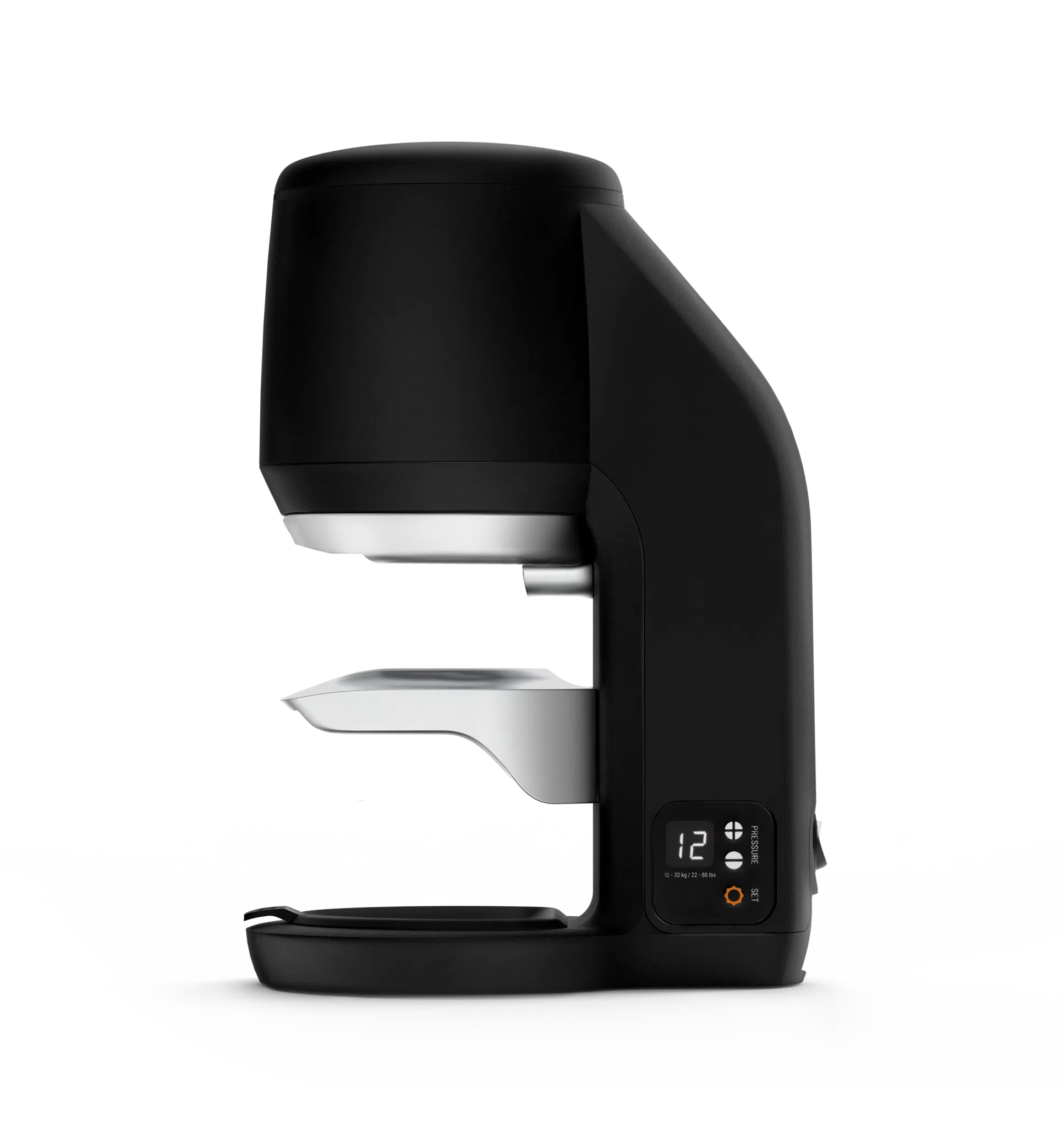
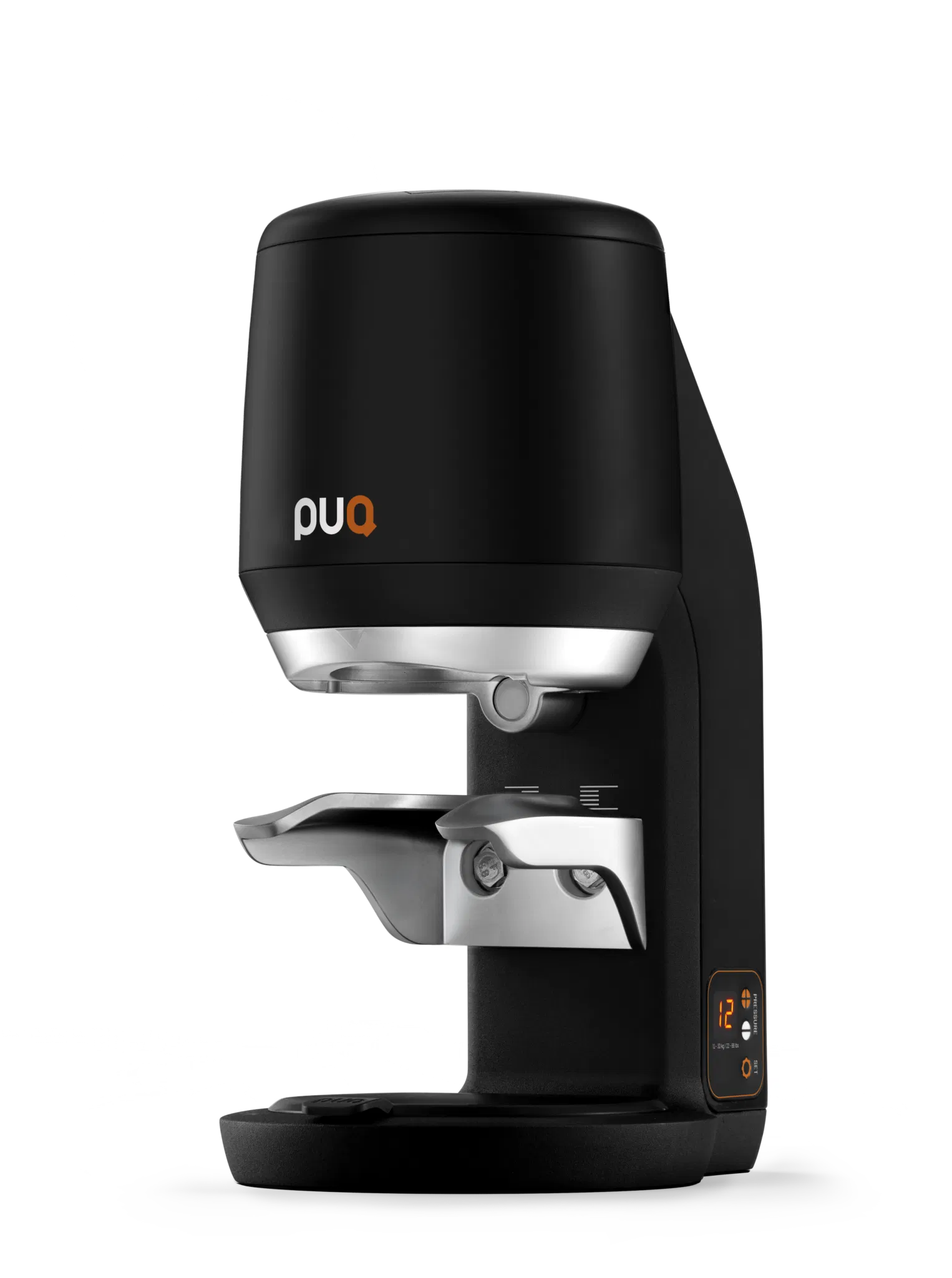
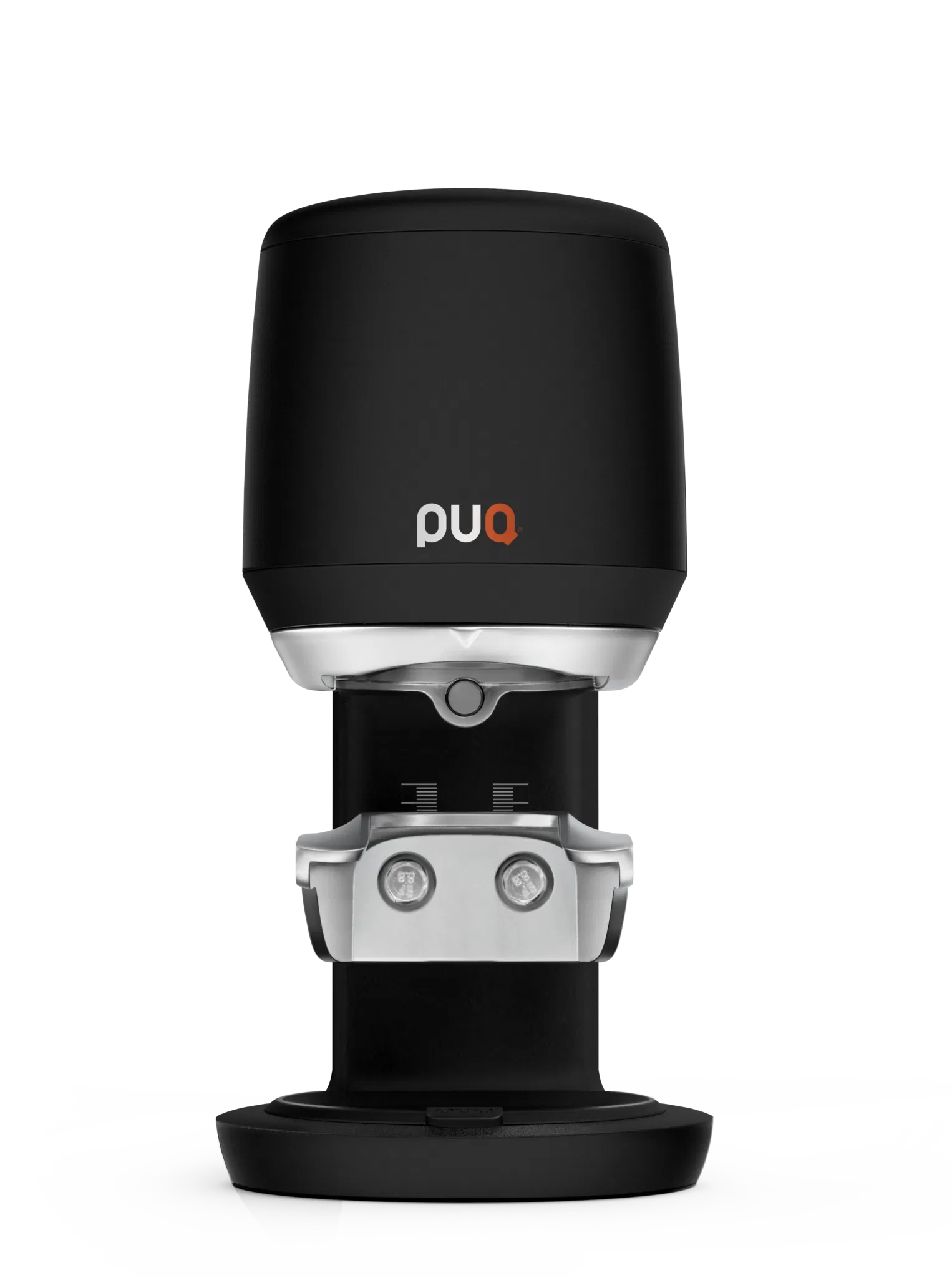
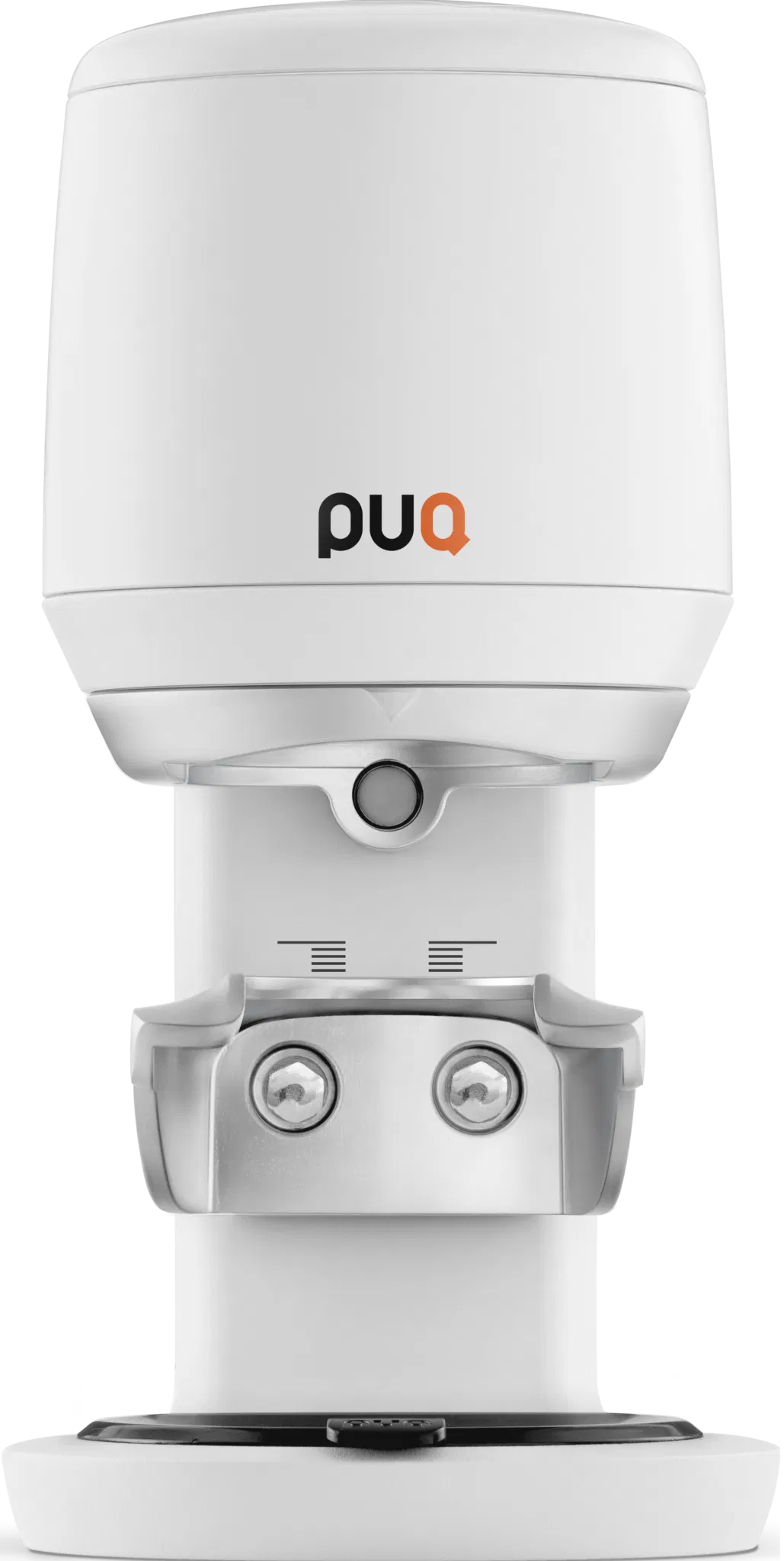
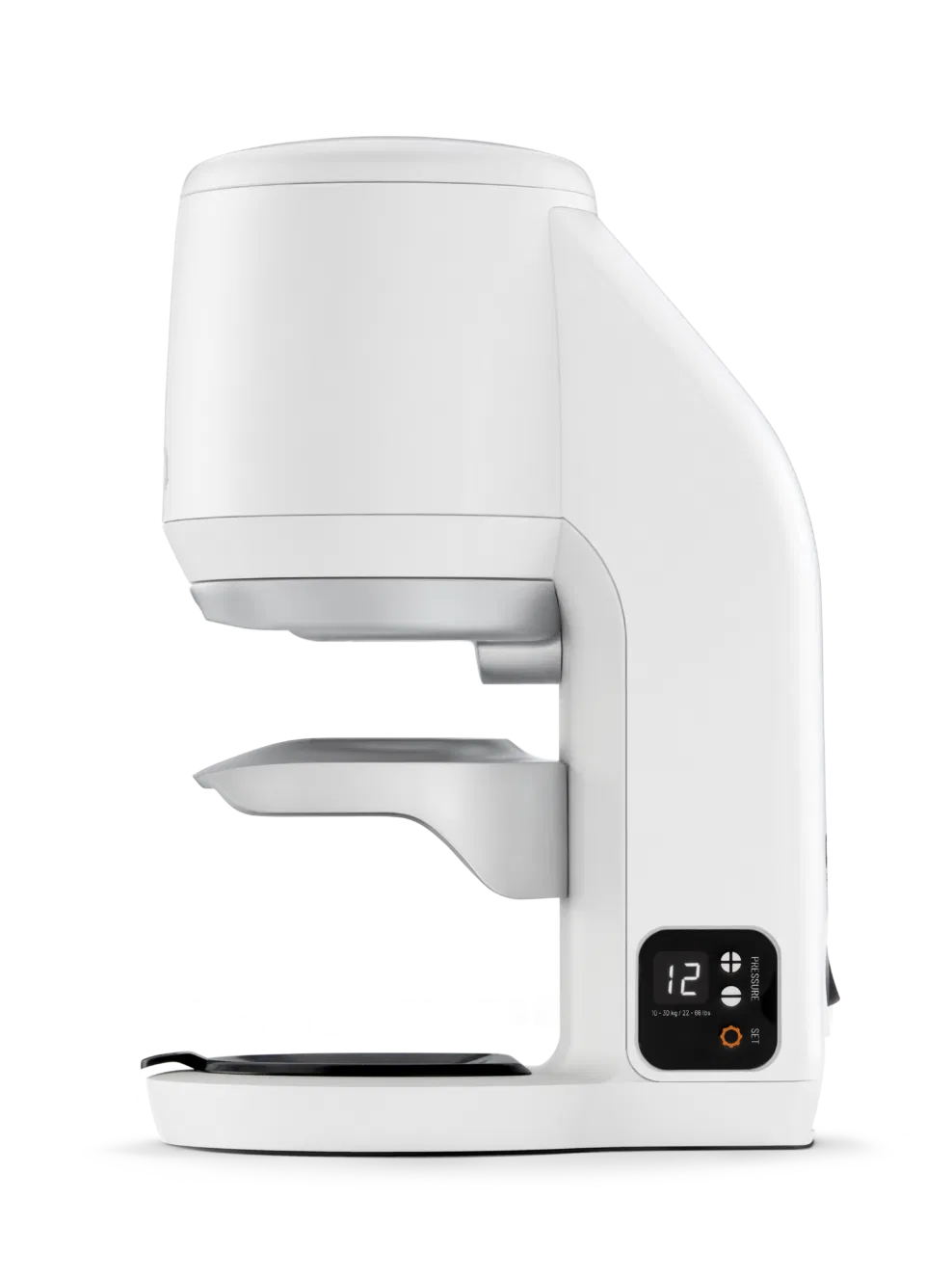
PUQ Press Mini - Compact, precise, professional
inkl. Mehrwertsteuer
Finanzieren ab 28,01 € / Monat* mit
🚚 Shipping within EU: 8 €
EU shipping costs, see shipping policy.
Passt wunderbar dazu

PUQ Press Mini - Compact, precise, professional
PUQ Press Mini - Compact, precise, professional (Generation 6)
Small but powerful: The PUQ Press Mini is your entry into the world of automated tamping - developed for baristas, coffee lovers and small cafés that value perfection. Whether in the home coffee station, in a specialty café or in stylish locations such as boutiques or barber stores - the PUQ Press Mini ensures even pressure, consistent quality and a professional workflow experience in the smallest of spaces.
Automatic tamping with barista precision
With the PUQ Press Mini, uneven tamping is a thing of the past. At the touch of a button, it delivers constant pressure between 10 and 30 kg - precise, reproducible and ergonomic. This means that the quality of your espresso always remains at the highest level, while you can concentrate fully on the craft. No guesswork, no fatigue - just perfect extraction with every shot.
Why the PUQ Press Mini?
Because great performance also comes in a compact design. The PUQ Press Mini is space-saving, quiet and easy to use. It offers professional tamp quality at the touch of a button - perfect for anyone who wants to simplify and improve their espresso preparation at the same time. Thanks to its modern design, the Mini blends seamlessly into any working environment.
Advantages at a glance
- Compact & space-saving: Ideal for small work surfaces or home barista setups
- Precise pressure: Constant 10-30 kg - exactly repeatable with every tamp
- Professional consistency: Same extraction, same quality - shot for shot
- Easy handling: Automatic tamping at the touch of a button
- High-quality workmanship: Developed for daily use with minimal maintenance
Technical specifications
| Feature | PUQ Press Mini |
|---|---|
| Coffee capacity | Up to 7 kg per week |
| Tamping pressure | 10 - 30 kg (adjustable in 1 kg increments) |
| Tamping profiles | Speedy, Precision, Single |
| Tamping diameter | 53 - 58.3 mm |
| Portafilter compatibility | Naked, single and double spout |
| Dimensions (W × D × H) | 18.1 × 13.6 × 27.2 cm |
| Weight (W × D × H) | 3.4 kg |
| Power output | 76 W | 110 - 240 V | 50 - 60 Hz |
| Warranty period | 2 years or 150,000 tamps |
Who is the PUQ Press Mini ideal for?
The PUQ Press Mini is perfect for:
- Small cafés and espresso bars with limited space
- Home baristas looking for consistent results and convenience
- Showrooms, boutiques or concept stores where high-quality coffee is part of the experience
Conclusion
The PUQ Press Mini brings professional tamp quality to any setup - compact, reliable and effortless. It ensures perfect espresso extraction with consistent quality and optimizes your workflow at the touch of a button. Small in size - big in performance.
Angaben zum Hersteller
* Bonität vorausgesetzt. Ratenbeispiel für PayPal Ratenzahlung: effektiver Jahreszins 12,49 % p.a., fester Sollzinssatz 11,80 % p.a., Laufzeit 24 Monate. Genaue Konditionen und Gesamtkosten werden im nächsten Schritt von PayPal angezeigt. Angebot gültig nur für Kunden mit Wohnsitz in Deutschland. Weitere Infos zur Bonitätsprüfung.
If you have any questions, please feel free to contact us at any time. We will get back to you as soon as possible, within 24 hours on weekdays.
-
Shipping info
We ship all products the same day if ordered before 1pm.
-
Support
We will also be there to support you and advise you after your purchase. If you have any questions about the product you purchased from us, please contact us.
-
Contact
Email: hello@naturbohne.de
Telefon: 07454 / 870 48 64
Frequently Asked Questions
I bought a new coffee grinder from Naturbohne and there are coffee residues in it.
Please note: Some manufacturers test their coffee grinders before shipping, which means that small coffee residues or bean residues can occasionally be found in the grinder. This procedure is used to test functionality and is considered a quality feature. Of course, we only sell new products - unless expressly stated otherwise.
Static charge – coffee grounds spray out from the side
With some coffee grinders, the ground coffee can become statically charged and spray out of the portafilter at the side. This means that not all of the ground coffee gets into the portafilter, which can lead to uneven extraction. Our recommendation: Use a dosing funnel to ensure that all of the ground coffee is precisely fed into the portafilter - for optimal espresso enjoyment.
What is dead space in coffee grinders?
Conventional coffee grinders often leave a so-called dead space in which coffee residues accumulate. These residues can not only affect the freshness, but also lead to old and fresh coffee grounds being mixed, which negatively affects the taste. In contrast, single dose grinders have a well-thought-out design that eliminates the dead space. Each portion is ground individually and precisely so that no residues are left behind - for a consistently pure and full-bodied coffee experience.
Which portafilter fits my espresso machine?
When choosing the right portafilter for your portafilter machine, it is important to know that each manufacturer develops its own brewing group - the most well-known is the Faema E61. However, this does not mean that any portafilter will fit without any problems. An incompatible portafilter can leak, which will have a direct negative impact on the quality of your espresso. We therefore recommend using either the portafilter originally supplied or one that is explicitly stated to be compatible with your machine. This will ensure that the pressure is optimally built up and the espresso is perfectly extracted.
Can I visit you or pick up the goods personally?
Yes, of course, you are welcome to come by and look at our products by appointment. We would be happy to advise you personally. The best thing to do is to send us an email with a few suggested appointment times.
We are located 5 minutes from the motorway between Stuttgart and Lake Constance on the edge of the Black Forest.
Important note, first use coffee grinders
Another little tip for the perfect start with your new mill:
You will get the best grinding result after you have ground about 1-2 kg of beans. It is best to use a few cheap beans so that the grinder can work optimally. And if you are wondering what you can do with the bean flour - it is perfect plant fertilizer! 🌿
It contains nitrogen, potassium, sulfur and phosphorus and is a real nutrient bomb for your plants.
Könnt ihr bei meiner Siebträgermaschine eine Offset Kalibrierung durchführen ?
Es gibt einige Argumente, die gegen eine Offset-Kalibrierung bei Lelit-Siebträgermaschinen sprechen, insbesondere bei Modellen wie der Lelit Bianca. Diese beziehen sich vor allem auf die Komplexität und die Limitierungen des Offsets als alleinige Lösung für Temperaturprobleme:
- Temperaturschwankungen und Instabilität. Der Offset berücksichtigt eine konstante Differenz zwischen Kesseltemperatur und Brühtemperatur. In der Praxis können jedoch Temperaturschwankungen auftreten, z. B. durch längere Standzeiten oder kontinuierliches Brühen. Dadurch ist die tatsächliche Brühtemperatur nicht immer präzise vorhersehbar.
- Abhängigkeit von Umgebungsbedingungen. Faktoren wie Raumtemperatur, Luftfeuchtigkeit und der Zustand der Maschine (z. B. Aufheizzeit) beeinflussen die Brühtemperatur erheblich. Ein fester Offset kann diese Variablen nicht dynamisch ausgleichen, was zu ungenauen Ergebnissen führen kann.
- Wärmeverlust bei Standzeiten. Nach längeren Pausen kühlt die Brühgruppe ab, und die Maschine benötigt Zeit, um wieder auf die gewünschte Temperatur zu kommen. Ein korrekt eingestellter Offset kann dies nicht kompensieren, weshalb zusätzliche Maßnahmen wie ein “Cooling Flush” nötig sind.
- Fehlkalibrierungen ab Werk. Bei einigen Lelit-Modellen wurde festgestellt, dass der Offset ab Werk oft ungenau eingestellt ist (z. B. 4–8 Grad zu niedrig bei der Lelit Bianca). Dies erfordert eine manuelle Nachkalibrierung durch Fachpersonal, was für Endnutzer kompliziert sein kann.
- Missverständnisse in der Anwendung. Viele Nutzer sind durch widersprüchliche Informationen zur Offset-Einstellung verunsichert, was zu Fehlanpassungen führen kann. Beispielsweise wird oft erwartet, dass der Offset allein alle Temperaturprobleme löst, obwohl er nur ein Teil eines komplexeren Systems ist.
Fazit
Die Offset-Kalibrierung ist ein nützliches Werkzeug, aber sie sollte nicht isoliert betrachtet werden. Eine Kombination aus präziser PID-Steuerung, regelmäßiger Wartung und angepassten Techniken (z. B. Spülshots) ist notwendig, um optimale Brühergebnisse zu erzielen.
Do you have any more questions?
Contact
If you have any questions about our products, please write to us here or use the chat function.